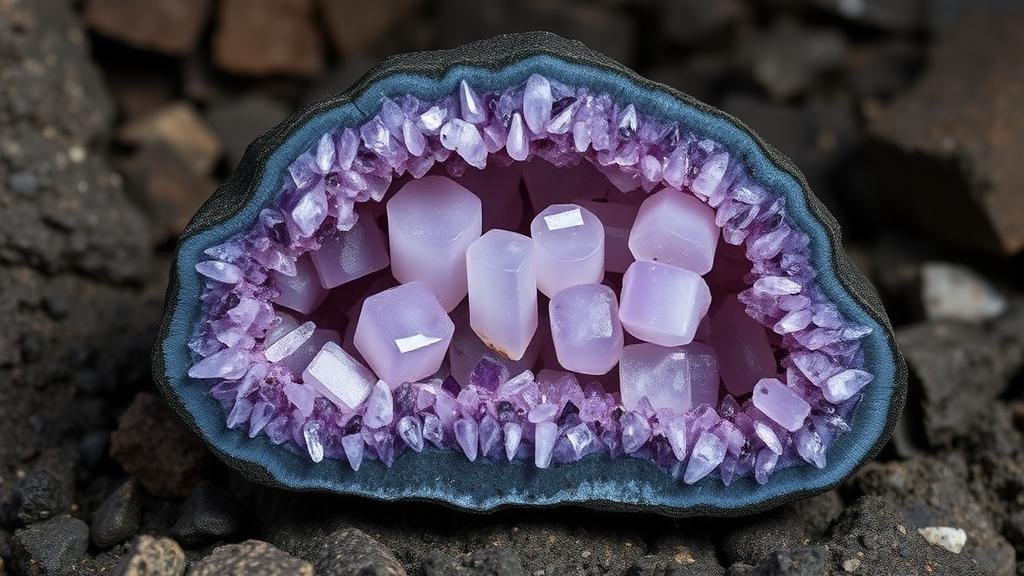Volcanic Geode Wonders: Unearthing Quartz and Amethyst Treasures Beneath the Surface
Volcanic Geode Wonders: Unearthing Quartz and Amethyst Treasures Beneath the Surface
Volcanic geodes are natures hidden gems, formed through unique geological processes that shape the earth beneath our feet. These spherical or oval-shaped rocks are often lined with stunning crystals such as quartz and amethyst, captivating the hearts of rockhounds and mineral collectors alike. In this article, we will explore what makes these geological wonders so special, the science behind their formation, and practical tips for collectors looking to uncover their own treasures.
The Formation of Volcanic Geodes
Geodes are formed in a range of geological settings, but volcanic geodes specifically arise from volcanic activity. process begins when gas bubbles form in volcanic rock during a volcanic eruption. As magma cools and solidifies, these bubbles create cavities within the rock. Over time, mineral-rich water seeps into these cavities, depositing minerals such as silica, quartz, and amethyst in the form of vibrant crystals.
For example, in the regions of the United States like Arizona and California, the volcanic rock formations, such as those found in the San Bernardino Mountains, often contain these geodes. entire process can take thousands to millions of years, showcasing the intricate dance of geological beauty and time.
The Beauty of Quartz and Amethyst Crystals
Quartz, the most abundant mineral in the Earth’s crust, appears in various forms, with amethyst being a notable variety. Amethyst, a purple variety of quartz, is prized for its beautiful hues that can range from light lavender to deep violet, depending on impurities in the crystal structure.
According to the American Museum of Natural History, the presence of iron and other trace elements during the formation of amethyst contributes to its distinctive color, making each crystal a unique masterpiece. Quartz and amethyst geodes can vary significantly in size, typically ranging from a few inches to several feet in diameter, and can contain beautiful crystal formations on their interior surfaces.
Benefits and Uses of Quartz and Amethyst
The allure of quartz and amethyst extends beyond their aesthetic appeal. Collectors and enthusiasts often appreciate the metaphysical properties attributed to these crystals. Amethyst is believed to promote calmness, balance, and peace, making it a popular choice in the world of crystal healing. Quartz, on the other hand, is often regarded as a powerful healing stone, enhancing energy and activating the bodys healing processes.
- Quartz is utilized in technology, such as watches and clocks, owing to its piezoelectric properties.
- Amethyst is used in jewelry and home decor, valued not only for its beauty but also for its purported energetic attributes.
How to Collect Volcanic Geodes
For rockhounds eager to start their collection, locating and unearthing volcanic geodes requires some knowledge and preparation. Here are some techniques for successful collecting:
- Research Locations: Areas with volcanic activity or geological formations known for geodes, such as the Oregon Desert or the California Desert, are prime hunting grounds. Local rockhounding guides can provide valuable insights into the best spots.
- Use the Right Tools: Essential tools include a rock hammer, chisel, safety goggles, and gloves. A shovel may also come in handy for digging in soft ground.
- Look for Tell-Tale Signs: Geodes often have a nodular appearance on the exterior. can be hidden among boulders or embedded in soil. Also, by rolling stones to observe their weight, you can estimate if they may contain a hollow core.
Responsible Collecting Practices
While the thrill of discovering geodes is exciting, it is crucial to practice responsible collecting. Always check local laws and regulations regarding rock collecting, as some areas may prohibit it entirely. Also, it’s vital to respect the environment by avoiding damage to natural formations and to only collect in designated areas or with the landowners permission.
Conclusion
Volcanic geodes, adorned with quartz and amethyst crystals, represent a fascinating intersection of geology and artistry. Understanding their formation, appreciating their beauty, and employing responsible collection practices not only enrich the hobby of rockhounding but also foster a deeper connection to the Earth’s remarkable processes. Whether you are a seasoned collector or just starting on your journey, the allure of unearthing these hidden natural treasures is bound to inspire a lifelong passion.
As you set out on your exploration, remember these actionable takeaways:
- Be informed about your chosen collecting site, including regulations and best practices.
- Arm yourself with the right tools and a keen eye for identifying potential geodes.
- Enjoy the journey of discovery while fostering a respect for nature and its wonders.



